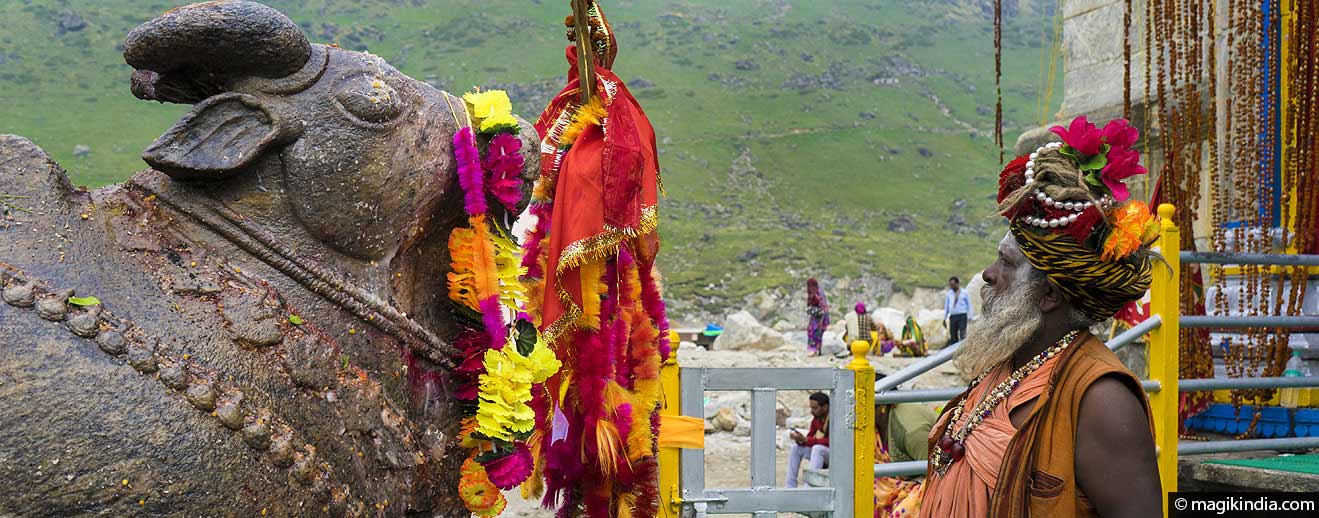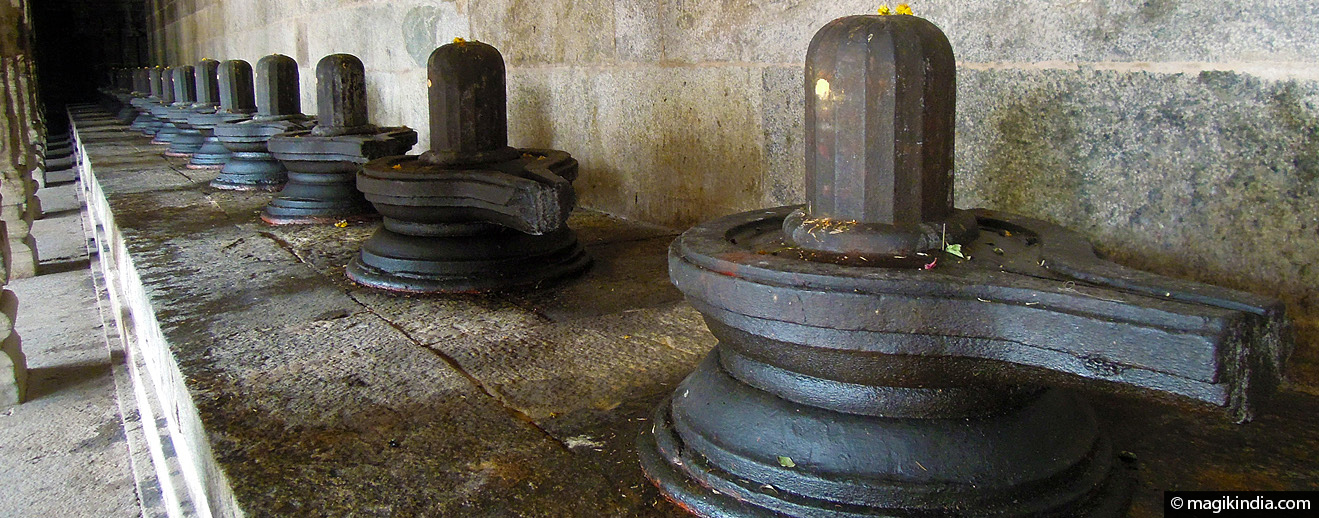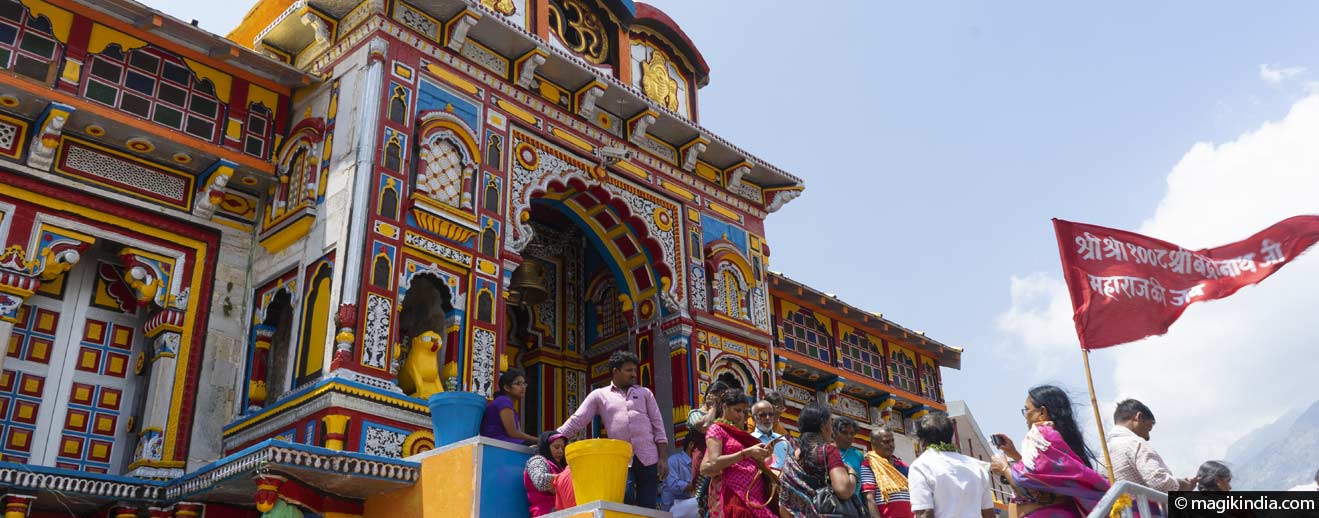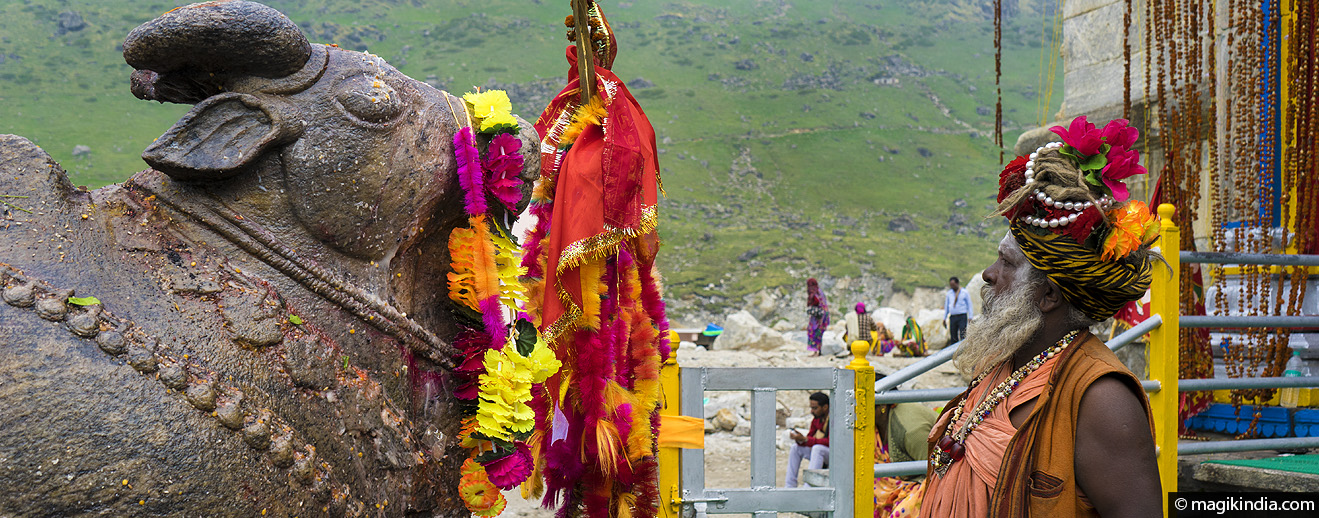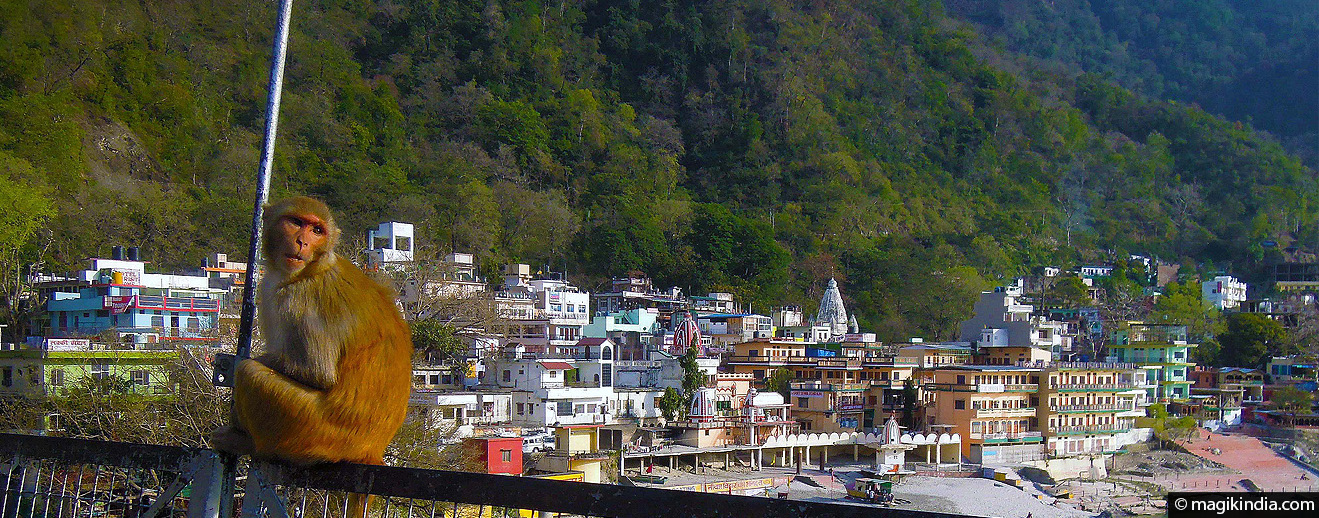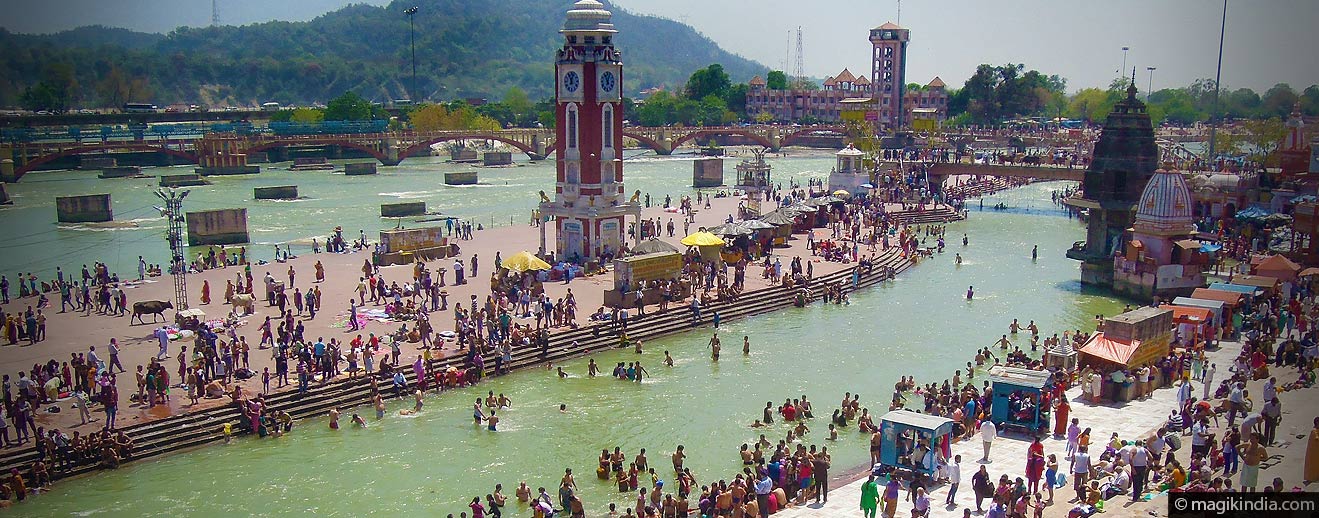
Panch Kedar, the pilgrimage of the five Shiva temples of Uttarakhand
The Himalayan range that surrounds northern India is considered the home of the god Shiva, one of the three gods of the Trimurti (the Hindu trinity). It is therefore not surprising to find there many places of pilgrimage associated with the lord of Mount Kailash. The “Panch Kedar”, in the state of Uttarakhand, are one of them. “Panch” means “five” in Hindi, and Kedar is another name for Shiva. The Panch Kesar therefore designate five highly sacred places dedicated to the worship of Shiva. They are: Kedarnath, Madhmaheshwar, Tungnath, Rudranath and Kalpeshwar.
The Panch Kedar origin
The “yatra” (pilgrimage) of the Panch Kedar has its origin in the ancient Hindu scriptures and more precisely, it is linked to the Pandava brothers of the Mahabaratha epic. It is said that the five princes wanted to do penance with the god Shiva for their sins committed during the epic war of Kurukshetra where they had to kill their own cousins, the Kauravas.

Shiva, who had expressed his resentment against this fratricidal war, did not want to accede to the prayers of the Pandavas. He therefore took the form of a buffalo and hid in the Himalayan region of Garhwal (now Uttarakhand). However, he ends up being unmasked in Guptakashi, by Bhima, one of the five Pandava brothers.
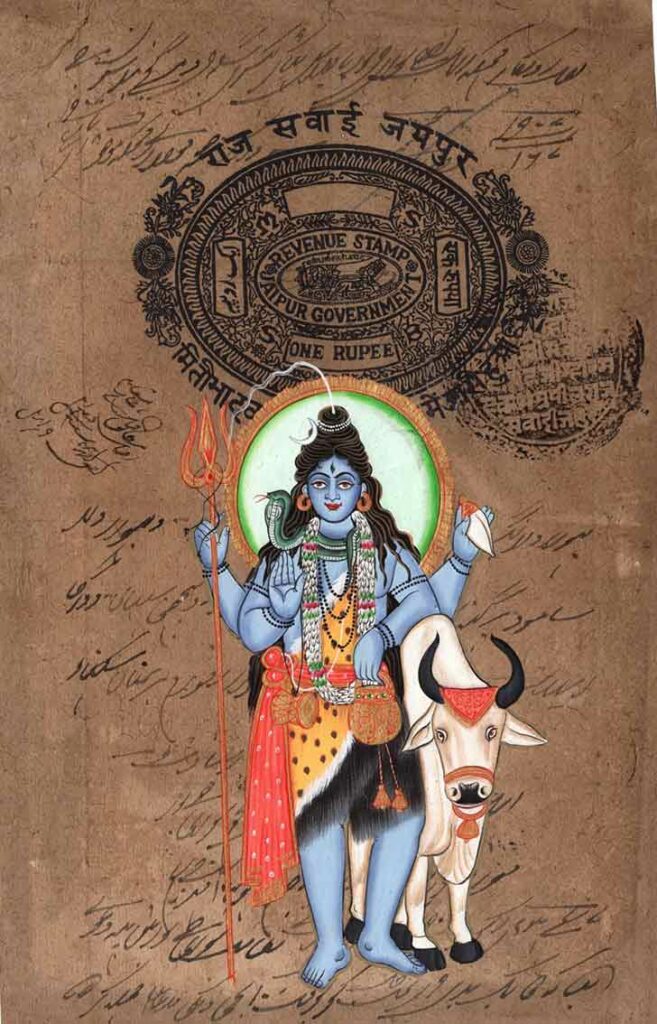
The bull-Shiva then disappeared underground and, later, parts of his body reappeared in different places in the Himalayas: the hump of the bull emerged in Kedarnath, the arms of Shiva appeared in Tungnath, his face in Rudranath, his navel and stomach to Madhyamaheshwar and his hair to Kalpeshwar.
The Pandavas, satisfied with this manifestation of Shiva, even incomplete, built temples at the five places of the apparitions. Following this, the Pandavas performed a yagna (fire sacrifice) at Kedarnath and were thus absolved of their sins.
The Five Temples
To reach each of these five temples, a hike of 4 to 40 km will be necessary. If you’re not in your best shape, you can hire ponies, porters and, for Kedarnath, you can even arrive by helicopter!
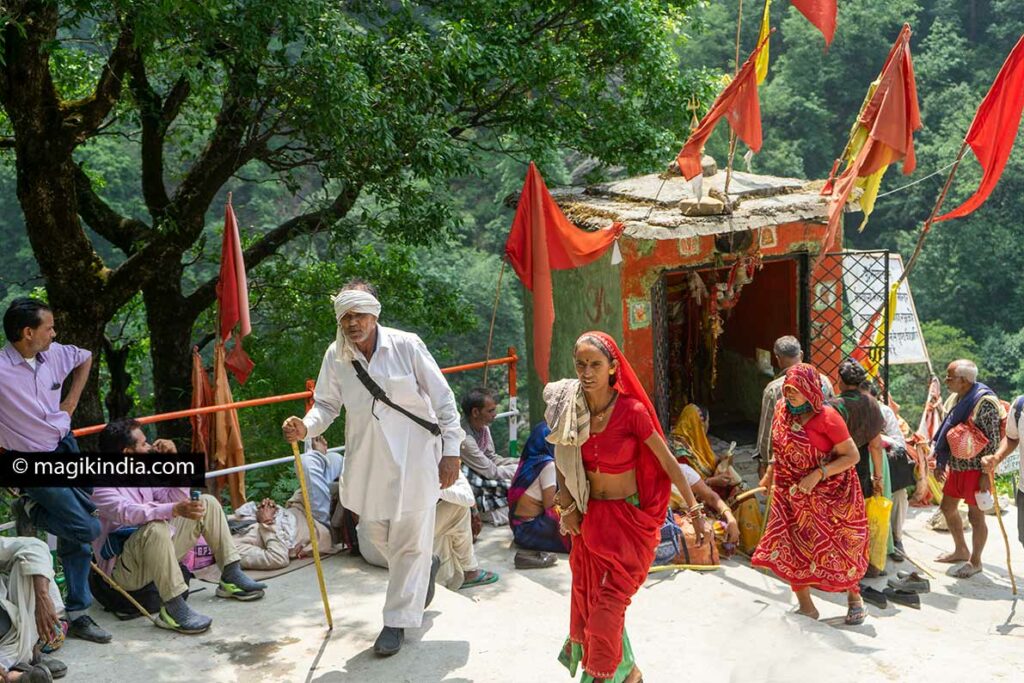
Panch Kedar are traditionally done in this order: Kedarnath, Madhmaheshwar, Tungnath, Rudranath and Kalpeshwar. At the end of the yatra, it is also customary to also visit the temple of Badrinath (it is the last of the Char Dhams) to obtain the blessings of the Lord Vishnu.
Kedarnath
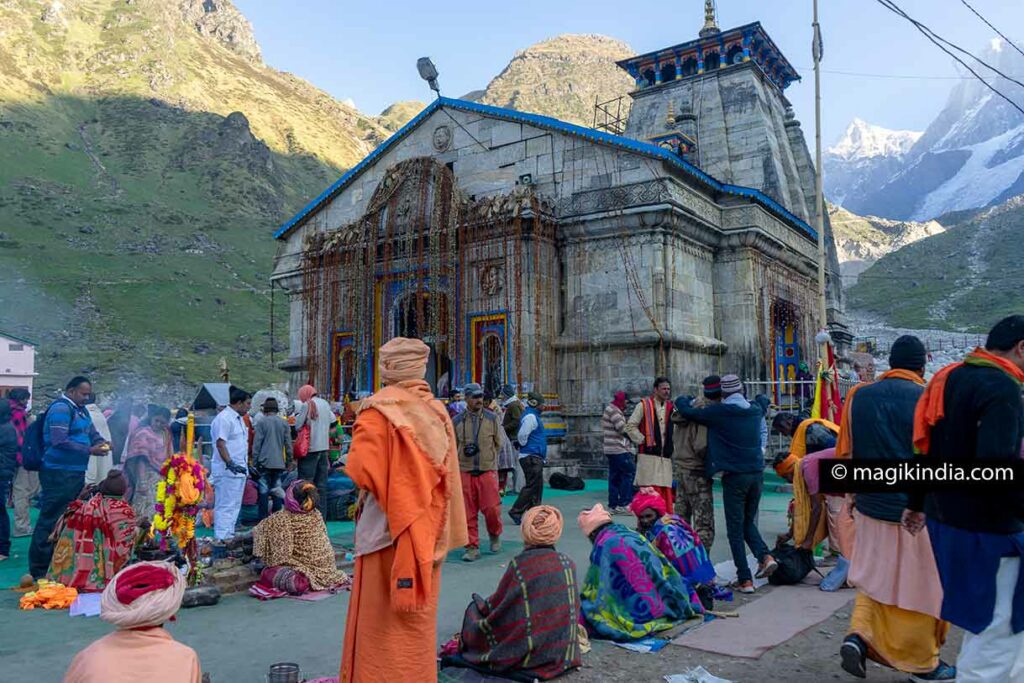
Kedarnath is the most important shrine of the pilgrimage. It is not only one of the Panch Kedar, but also one of the “Chota Char Dham” (the four small sacred dwellings of the Himalayas) and, also, one of the twelve “Jyotir Lingam” (Lingams of light).

The temple is located at 3,583 m above sea level near the Chorabari Glacier, it is reached after a moderate level trek of 18 km (36 km round trip) starting from the village of Gaurikhund. After these first 18 km, Yatri generally spend a night on site in one of the hotels around the temple (basic comfort). The return (18 km) is via the same path.

The place is magical especially during the morning arati when the sun gradually rises over the high snow-capped peaks, as pilgrims wait patiently to witness the arati, the offering of flames to the lord of the Himalayas.

When you experience the tranquility of this first Panch Kedar, it is hard to believe that this city has experienced one of the worst climatic disasters in India. In June 2013, following heavy rainfall across the state of Uttarakhand, Kedarnath was devastated by flash floods from the melting Chorabari Glacier; more than 4,000 pilgrims lost their lives. The only good news in this tragedy is that, except for a few cracks, the structure of the temple miraculously sustained no damage. All around, the scars of this disaster are still clearly visible, even after 8 years.
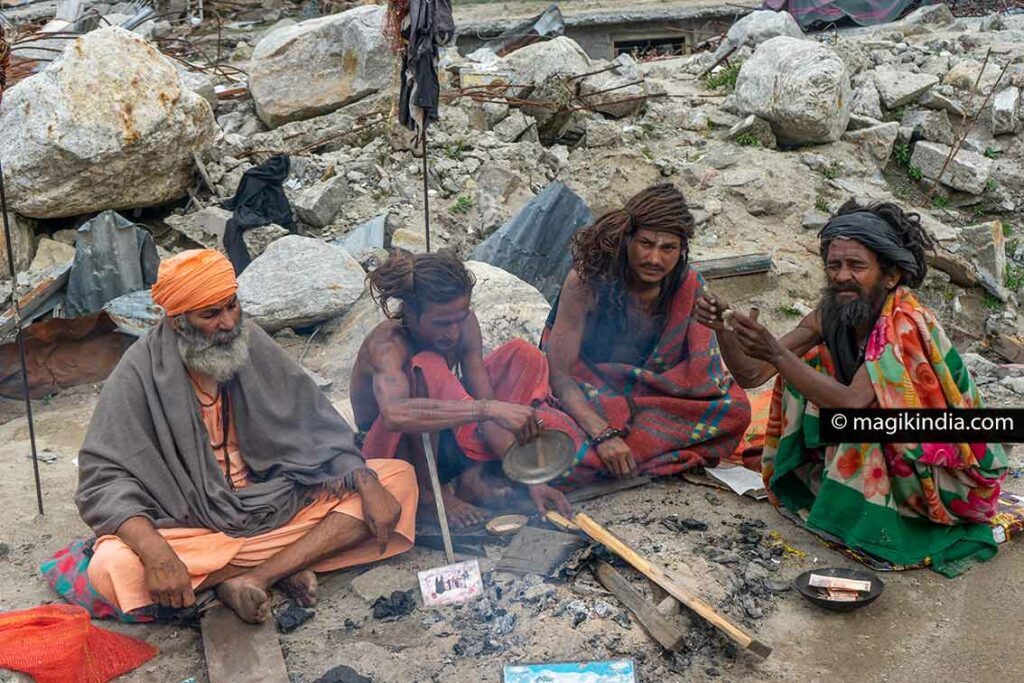
Madhmaheshwar
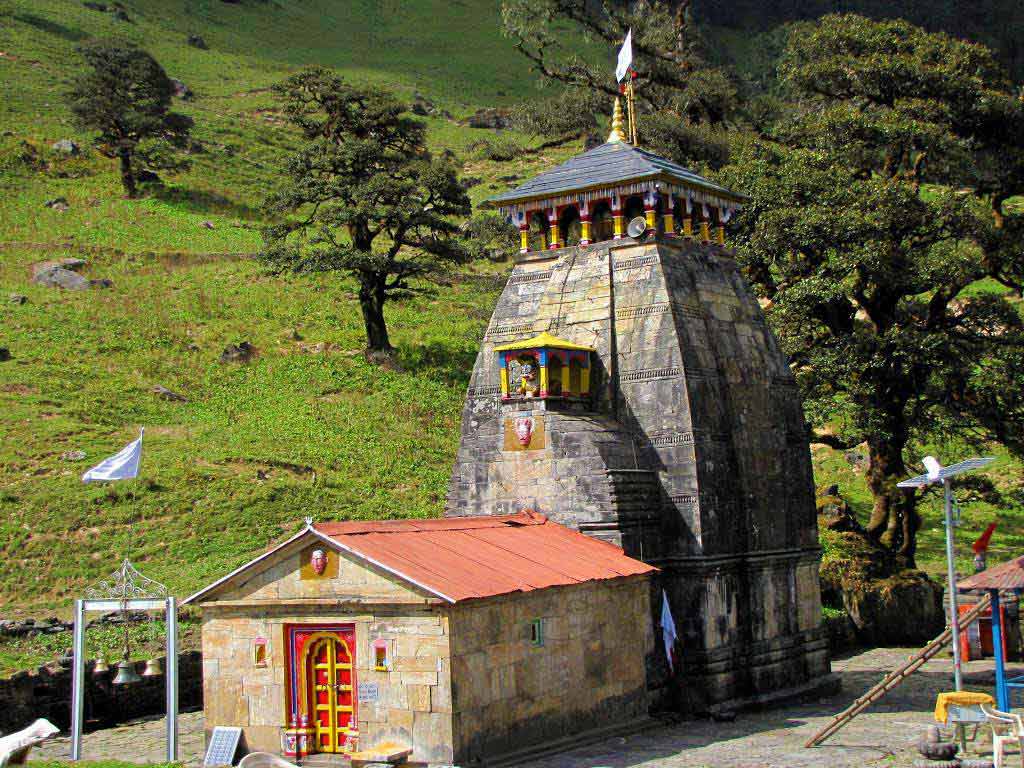
Madhmaheshwar, the second of the Panch Kedar, is, like the first three, a stone temple in the Nagara style. Perched at an altitude of 3,497 m and backed by a hill dotted with century-old trees, it offers a splendid view of verdant alpine plains. Here, Shiva’s navel and stomach are worshipped.
The Madhmaheshwar trek, 18 km, is done in several stages. It begins in the village of Ransi with a break in Gaundar, a small town on the banks of a river where you will find several guest houses to spend the night there.
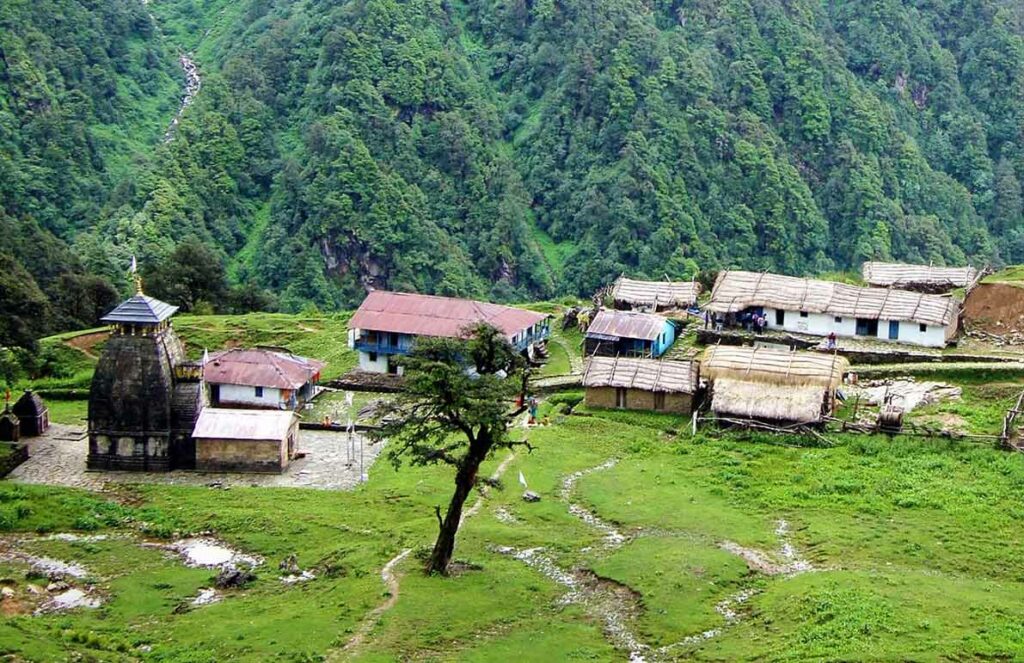
If the road from Ransi to Gaundar is rather easy, the one from Gaundar to the village of Nanu is more demanding. From Nanu, where you can spend the night, you will have to walk another two hours to the temple.
For an even more spectacular view, head to the plateau of Budha Madhmaheshwar, 2 km from the temple where the peaks of Chaukhamba are reflected in all their splendor in a small glacial lake.
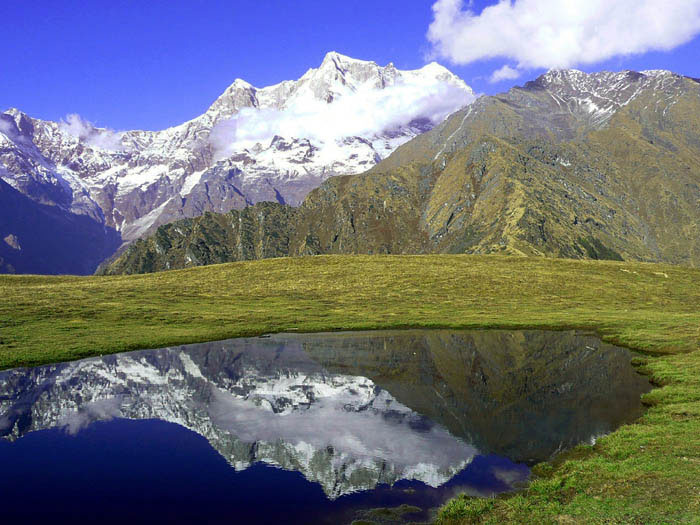
Tungnath
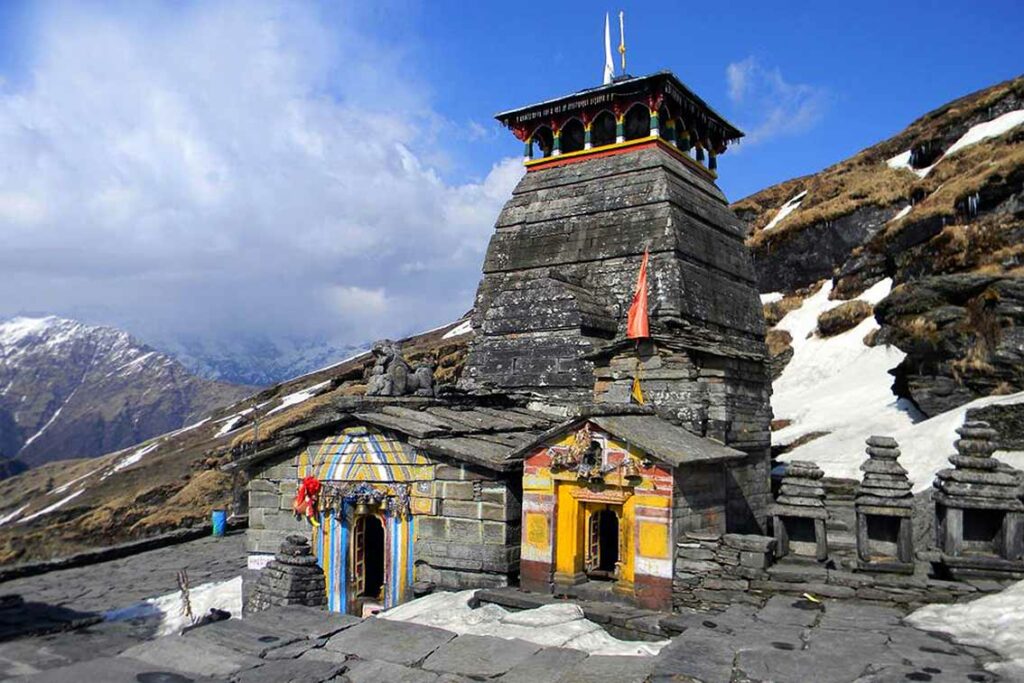
Tungnath is surely the most beautiful temple of the Panch Kedar, at least it is the highest Hindu sanctuary in India in terms of altitude (3,680 m). It is where the arms of Shiva reappeared.
The temple sits on a paved platform overlooking a cliff, surrounded by the snow-capped peaks of Mounts Neelkanth, Kedarnath and Nanda Devi. Its sanctuary contains the statues of Vyasadeva (a saint, compiler of the Vedas) and Kalabhairava (the fierce aspect of Shiva) as well as the five faces of the Pandavas printed in silver plates. Right next to it, there is also a small temple dedicated to Shakti, the goddess Parvati.
The trek starts at the village of Chopta and it will take you about 3 to 4 hours of walking to reach it (7 km). From Tungnath you can continue to the peak of Chandrashilla (3,690m) which offers an even more mesmerizing view.
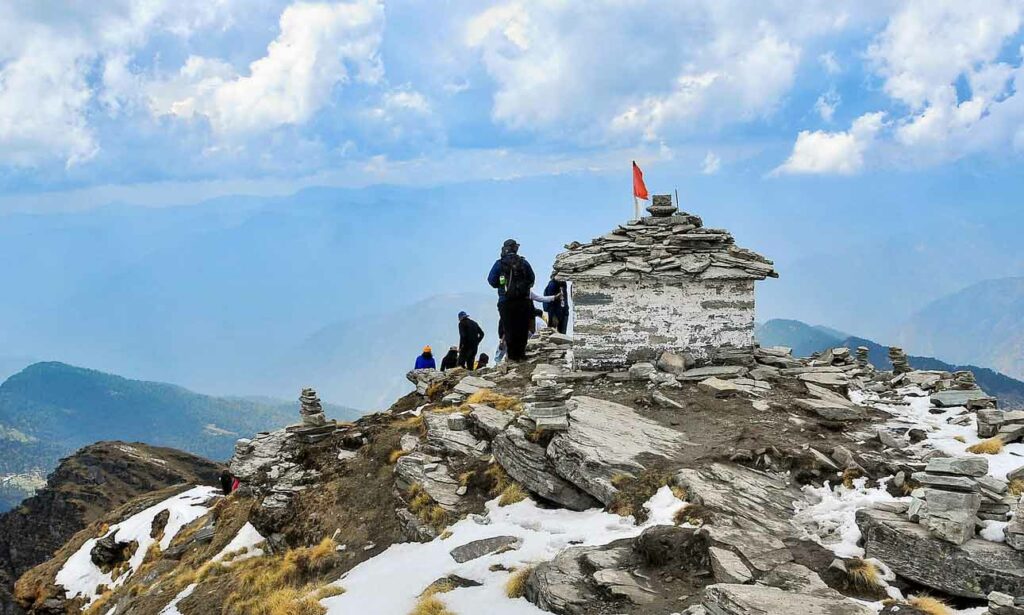
Rudranath
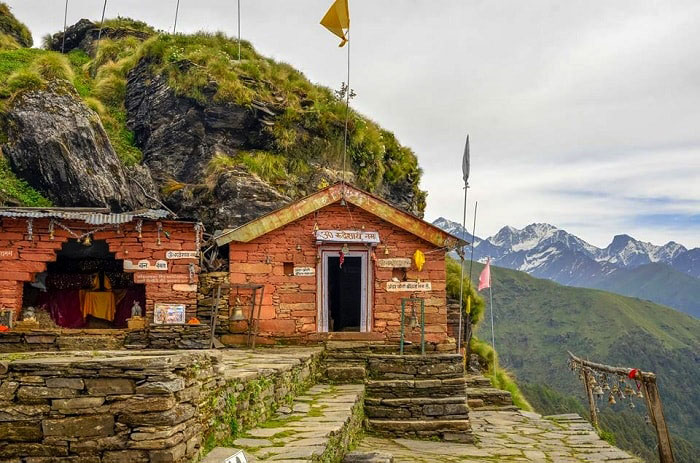
The Rudranath trek, the fourth, is considered the most difficult of the Panch Kedar, its length (40 km in total) and its steep climb indeed require a good level of hiking.
The landscapes traversed including alpine meadows and dense forests with the backdrop of the mountain peaks of Trishul, Nanda Devi and Parbat make this yatra memorable, so fatigue is quickly forgotten.
The hike can start either from the village of Sagar, or that of Helang or Urgam. It is usually done in several stages. You can also reach Rudranath from Kalpeshwara temple (see below)
From the village of Sagar, 12 km hike to Panar Bugyal with a break in Litti where you can eat. In Panar, night in a guesthouse or, if you have brought camping equipment, you can pitch your tent.
From Panar Bugyal to Rudranath temple there is another steep 8 km with a stop at Pitrudhar village. Then, past the Naola pass, you will have to climb another 4 km.
Rudranath is a small hut-style stone temple built around a cave. The face (mukha) of Lord Shiva is worshiped here as “Neelakantha Mahadeva”.
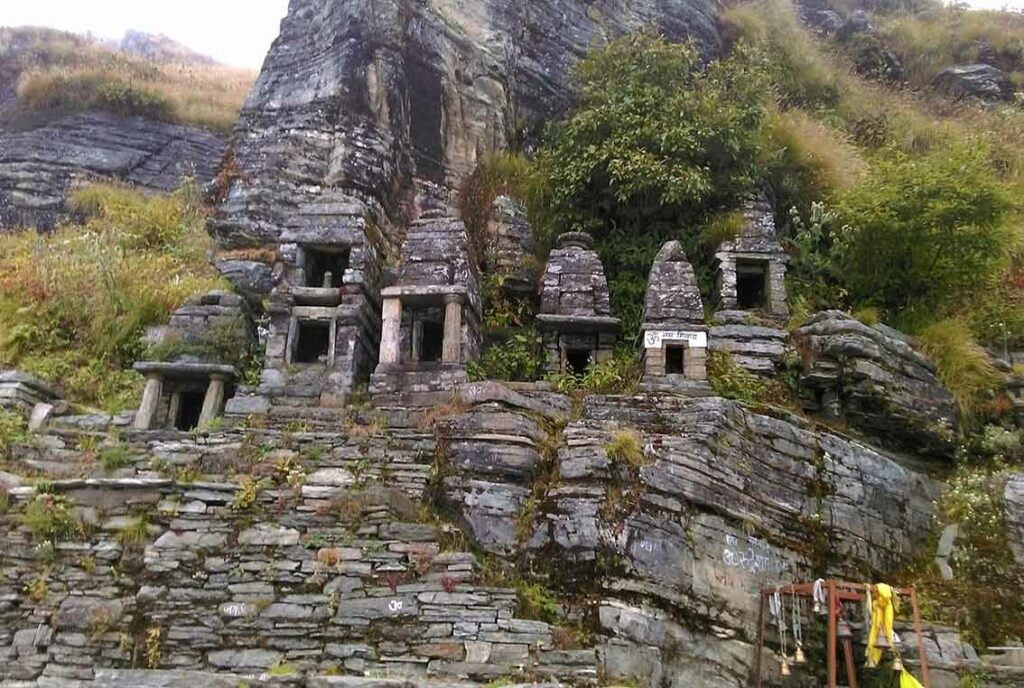
Kalpeshwar

Located 2,200m above sea level, Kalpeshwar, the last of the Panch Kedar, is where Shiva’s hair (Jata) reappeared. It is a very sober little cave-temple above a cliff and hidden in a thick forest.
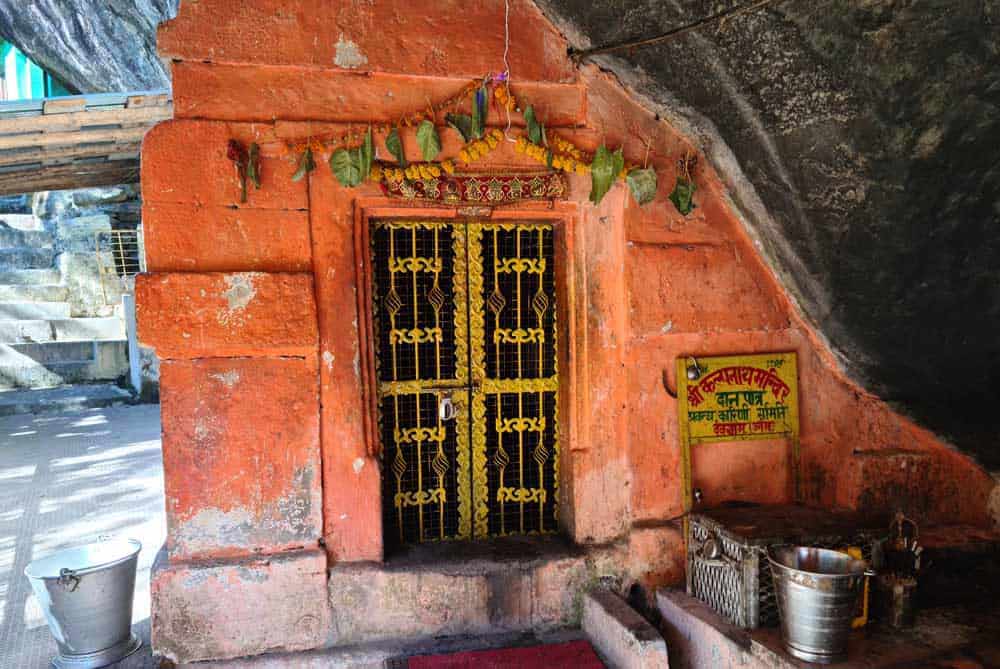
To reach Kalpeshwar temple, you can start from Helang village and then walk 9 km to Urgam village, which has accommodation and restaurants. From there, it is another 2 km on foot to the temple. You can also start the trek from Urgam (2 km) or Devgram (barely 500 m). As you will have understood, this last Panch Kedar is the easiest and it is also the only one accessible all year round.
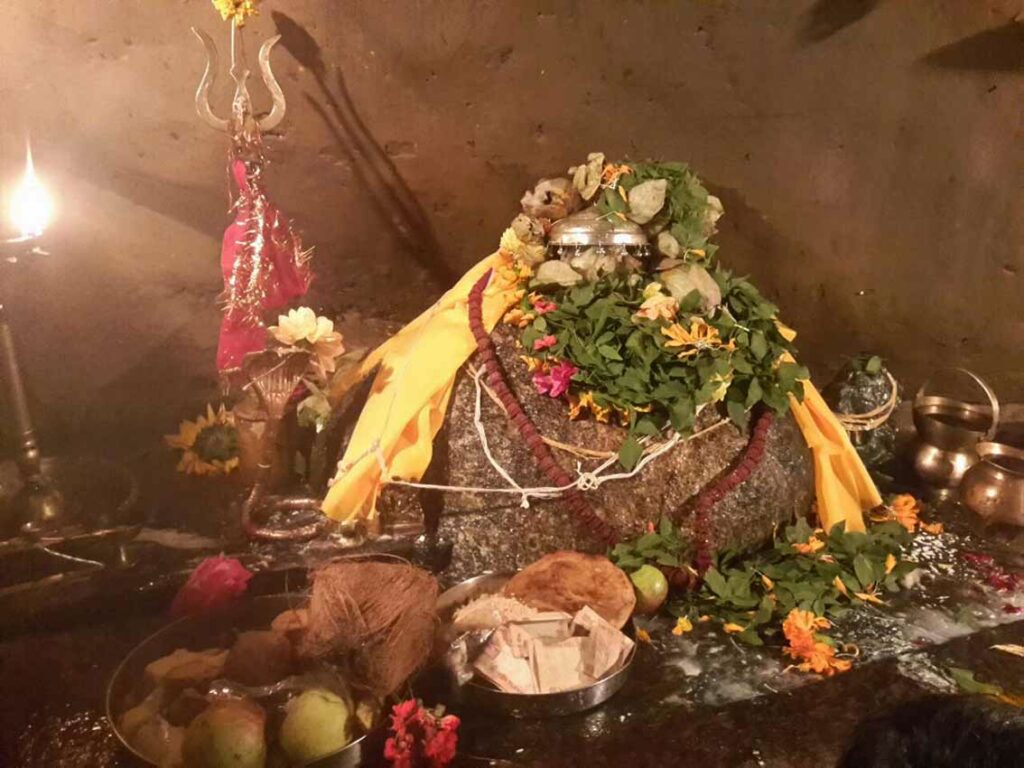
Information
How to get to Panch Kedar?
The most practical is to hire a taxi, as the journeys are long and it will also allow you to stop en route to visit other places of interest.
If you want to travel cheap, there is a bus that departs from Gaurikund near Kedarnath every morning at 5 a.m. and stops at each Panch Kedar starting point.
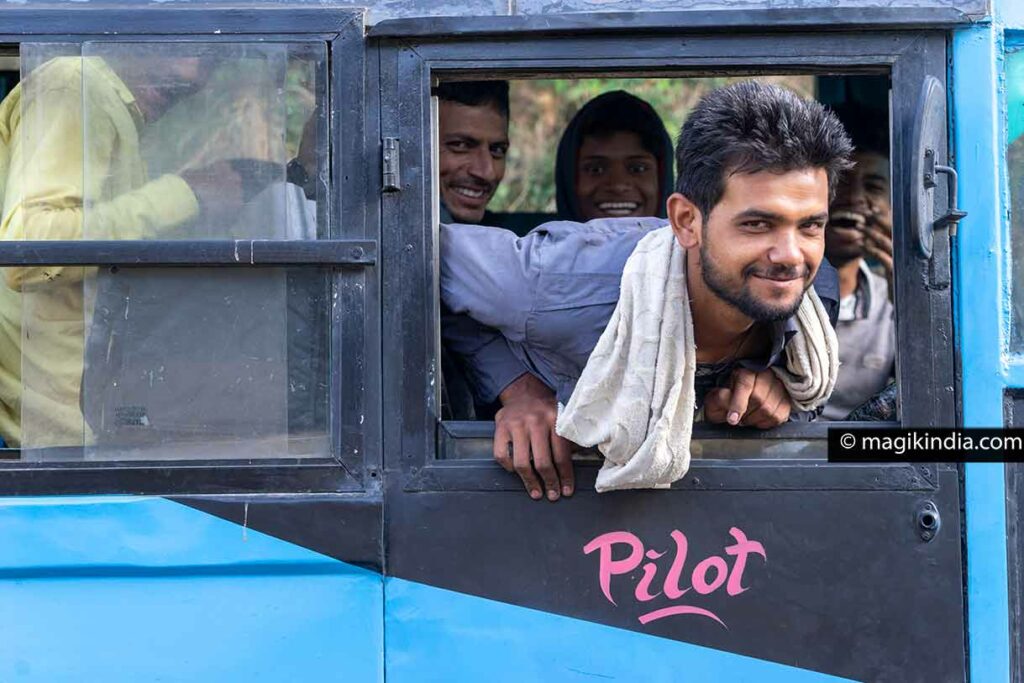
Duration of the Yatra: count from 13 to 16 days depending on your trekking level.
Price: no less than 1000 euros for 2 people for 2 weeks if you hire a taxi.
Accommodation: the hotels are rather basic, this is also part of the Panch Kedar adventure.
Ponies and carriers: consult the official prices before contacting a carrier or a pony owner.
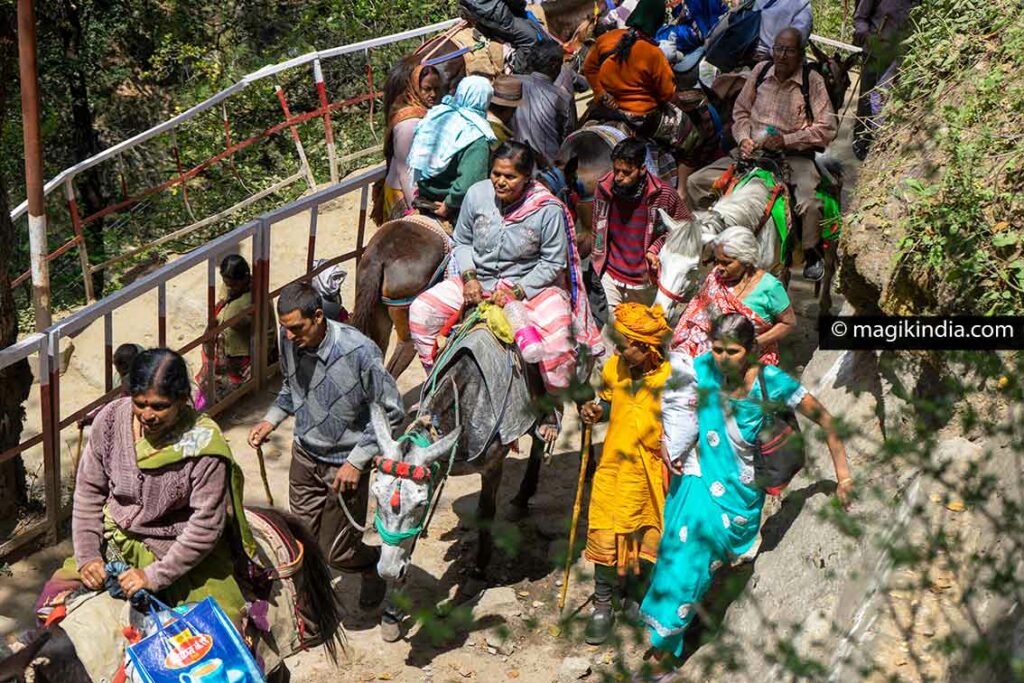
When to go there?
Apart from Kalpeshwar, Panch Kedar only open for a period of 6 months, usually from April to October. Outside of this period, they are closed due to the thick snowpack that covers the high altitude regions.
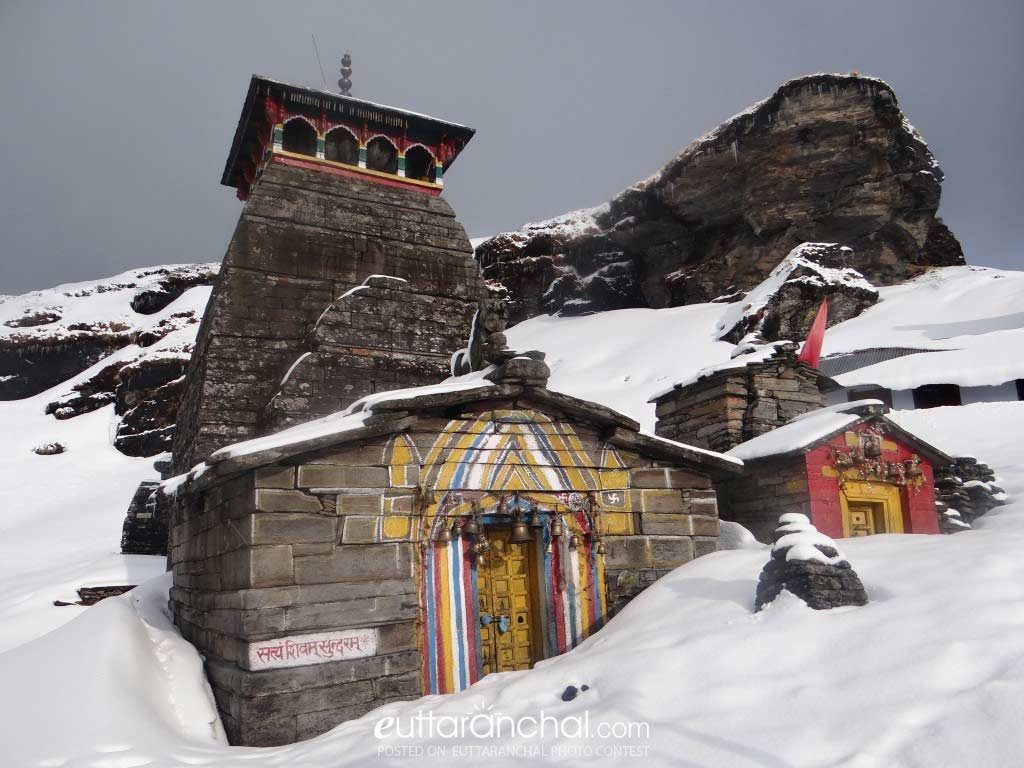
The best time to travel to Panch Kedar is usually in May and June and then September and October.
I strongly advise against the monsoon period (July and August) because of possible landslides.
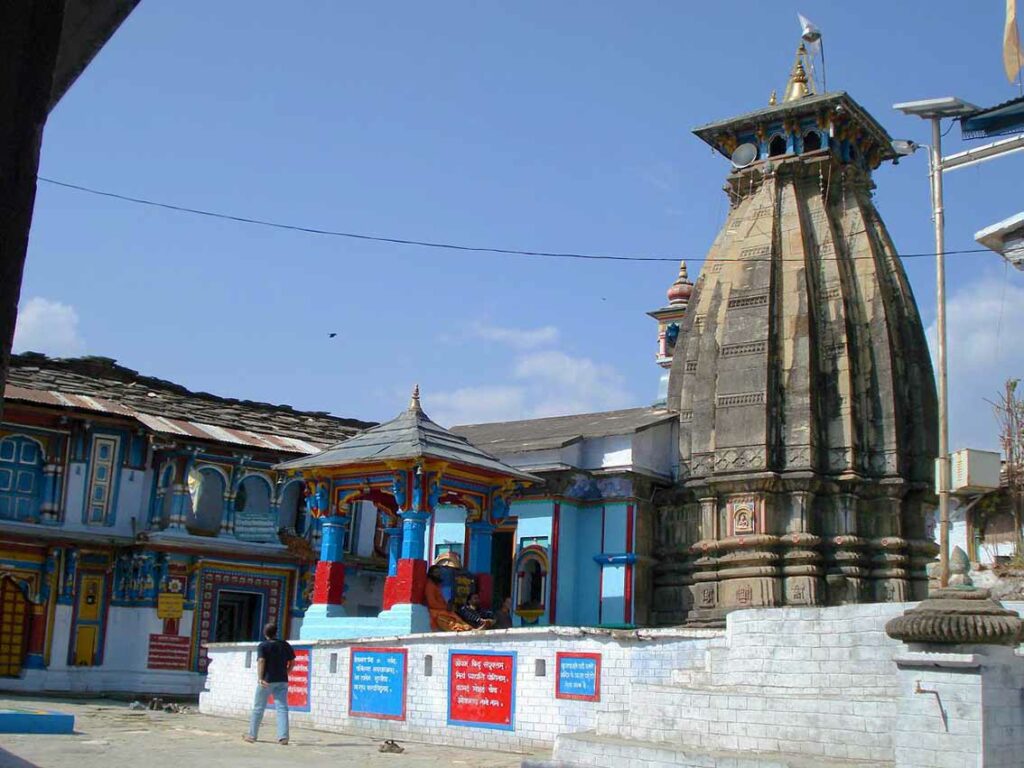
As four Panch Kedar temples close during winter, the Uthsavar (processional idols representing the main deity) from Kedarnath and Madhyamaheshwar are moved to the Omkareshwar temple at Ukhimath. That of Tungnath is worshiped at Makkumath and that of Rudranath is brought to Gopeshwar.
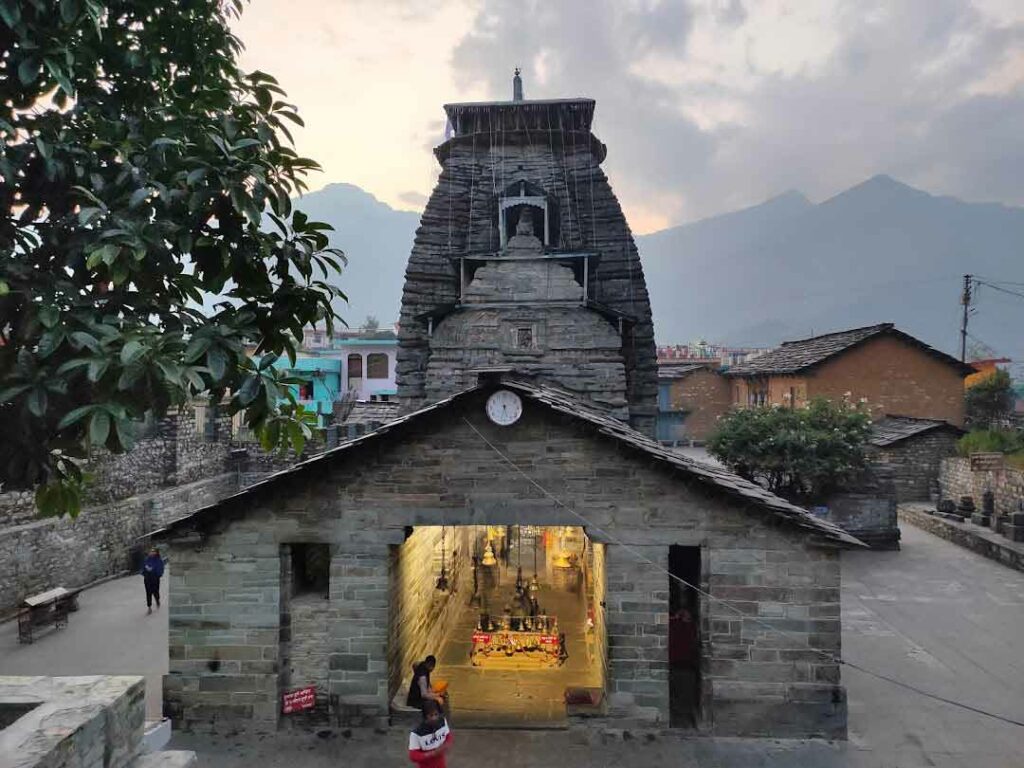
Physical condition
This Yatra features high altitude treks with distances up to 40 km. Make sure you are in good physical shape. A small sports training of several months before leaving is recommended. If you suffer from a respiratory disease it is better not to do these treks.

